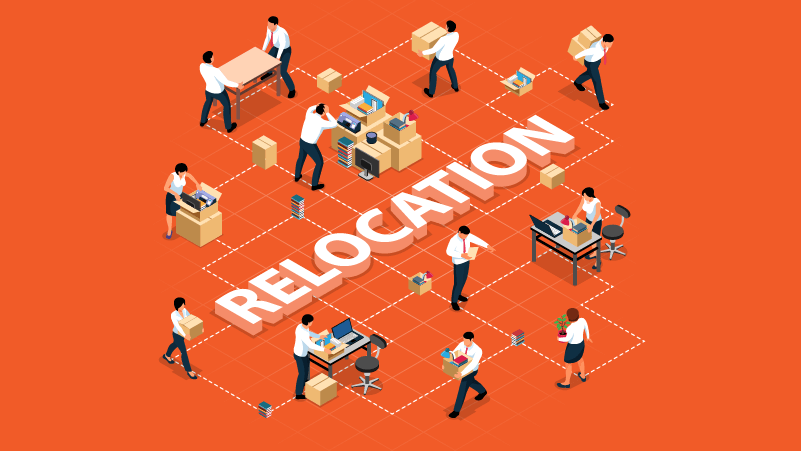
Thinking about moving to a new office soon? While a new office is exciting, unexpected costs could lead to the move going over budget. According to commercial real estate firm AQUILA, a 5,000 square foot office can cost $5,000 to $7,000 dollars to move, but there are a number of variables including, how far you’re moving, the number of items you’re moving, as well as the weight, especially if you have a significant number of paper documents. This is why it’s not uncommon for organizations to underestimate how much it costs to move and store paper-based documents–one of the major costs you need to consider. Documents in filing cabinets, bankers boxes, and anything that’s spread on desks not only weighs a lot and is expensive to transport but also consumes unnecessary office real estate.
That’s why there’s no better time to spring clean your paper documents than when you’re moving. This process can be daunting, but here are some steps to better assess costs, timing, and how to efficiently make the shift:
Step 1: Round-up All Paper-Based Documents
Determining which documents should be digitized, which you can do without, and which are going into long-term storage is a first key step in efficiently starting afresh. Start evaluating your paper-based documents as soon as possible. This way you’ll have a full inventory early on in the process and you won’t panic when you realize how many documents you need to move.
There are a lot of factors to consider. For example, one of our clients called us in a panic. During their office move they realized the weight of the paper exceeded the maximum load weight for the floor in their new space. To keep all the paper documents they would’ve had to reinforce the floor with steel beams. However, they avoided these astronomical costs by having us digitize these files.
So when you’re going through the first step of your move, make sure you include filing cabinets, boxes, documents on desks, and filing rooms throughout your office. Give special attention to documents that are necessary for record retention and have security requirements.
Step 2: Classify Documents to Be Stored, Scanned, or Shredded
Once you have a clear inventory, it’s time to classify your documents into one of the following categories:
- Documents to be scanned: These are the files that your employees need to access on a regular basis and are typically used by a large number of people and need to be easily shared. Other documents that fall into this category are those that need to be tracked or be securely stored for only select members of your company to access.
- Documents to be stored: Unlike frequently used documents, these files are usually necessary for record retention. Make an inventory with a retention schedule on the boxes to help organize them while planning for the move. That way they can be disposed of when their retention schedule is overdue. However, if legally permitted, these documents should be digitized. That way you can easily keep track of when they need to be deleted and avoid incurring any extra fees for the weight and real estate they’ll take up in the new office.
- Documents to be shredded: These documents you don’t need for your organization’s operations and have no legal obligation to store. It’s important to separate from your other documents, so you don’t have additional costs moving or scanning them if they’re ultimately not needed.
Step 3: Document Scanning and Digitizing Your Paper-Based Files
Make sure that once your documents are scanned, you have a way to securely store, manage, and share the newly digitized files. By implementing cloud document management software your employees can access files from any device with no capital expense or ongoing maintenance costs. Using cloud document management software, your digitized files can be easily shared, stored, managed, and tracked. With the new normal this is especially important for members of your organization that are working in hybrid teams from both the office and home.
Document scanning takes time even if you’re doing it with the help of a BPO partner. Make sure you request services with enough time to avoid rush service costs. For your non-paper based office materials, you may want to hire a moving consultant to ensure that everything is well planned and thought through.
When choosing the right BPO document scanning partner to work with, it’s critical for them to be experienced so you can be sure that you’re truly benefitting from the partnership. This is most easily achieved when working with a company that not only has scanning experience, but also has a proven track record in implementing document management software that meets your business needs.
With over 30 years of experience, MetaSource is a global leader in digital transformation bringing the right mix of technology, expertise, and services that will help you achieve your business goals. As a SOC 2 Type 2 certified and HIPAA compliant company, its processes are audited annually by a third party, ensuring service quality and document security.